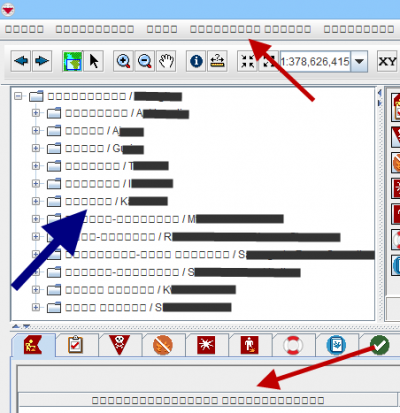Difference between revisions of "Language and Translations"
| Line 1: | Line 1: | ||
{{TOC right}} | {{TOC right}} | ||
| + | {{Note | The Data Entry Templates and the Summary Templates will not automatically be translated. }} | ||
| + | |||
The language used by {{IMSMANG}} is of two types: | The language used by {{IMSMANG}} is of two types: | ||
# the language that the data is entered in (blue arrow) | # the language that the data is entered in (blue arrow) | ||
Revision as of 16:59, 11 November 2014
| |
The Data Entry Templates and the Summary Templates will not automatically be translated. |
The language used by IMSMANG is of two types:
- the language that the data is entered in (blue arrow)
- the language that the application use (red arrows).
Data language
When the users see squares instead of expected characters even if the font is installed on the computer e.g. in the Country structure then you need to create a new folder called fallback in C:\IMSMAng\java\lib\fonts and copy the fonts for the language files there.
Application language a.k.a. localisation or translation
| How To |
|---|
| |
To modify the localisation files, you should use Rosetta-J. For information on using Rosetta-J, contact your GICHD IM advisor. |
If you would like to run IMSMANG in a language other than English, you will need to create three properties files for that language:
- IMessagesXX.properties;
- ITermsXX.properties;
- trans_XX.properties.
IMessages and ITerms are not imported into the database nor included in the database backup. Please, refer to Backup and Restore. The third file is imported into the database and therefore included in the database backup.
When the users see squares instead of expected characters e.g. in menus and labels then something is wrong with the translation files IMessages and ITerms for the language specified in the Regional settings on the user's computer. Template:NavBox Getting started with IMSMA
